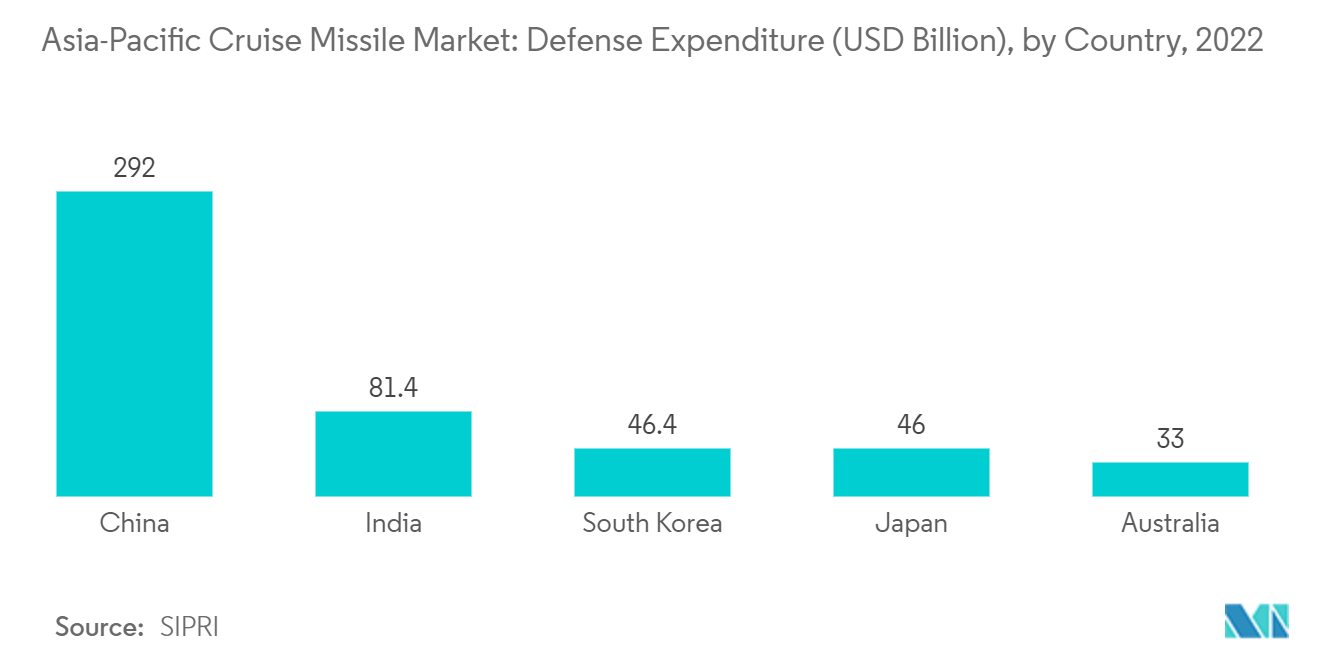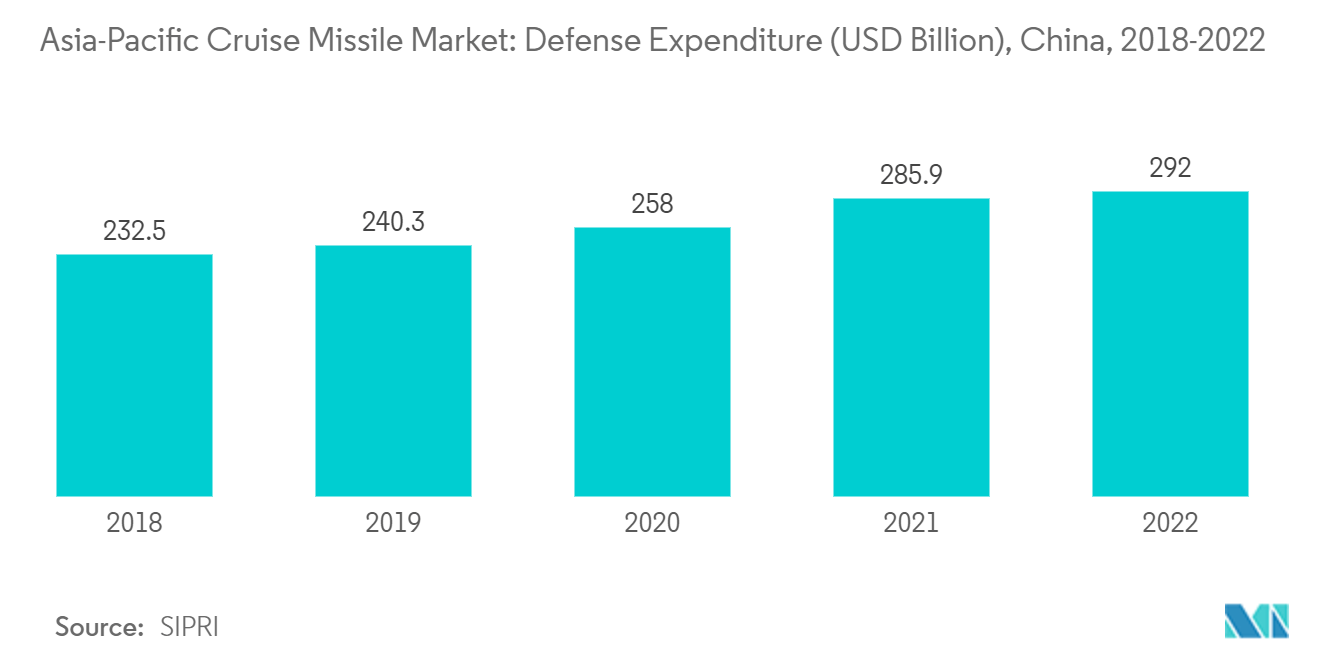Market Trends of Asia-Pacific Cruise Missile Industry
Long-Range Missiles are Projected to Dominate the Market During the Forecast Period
The manufacturing and procurement costs of long-range missiles are higher compared to others, as they need to travel long distances and deliver more lethal warheads. The demand for long-range missiles is increasing in Asia-Pacific where the countries need to protect their extensive land-based borders from neighboring adversaries. In Asia-Pacific, countries like China, India, Japan, and South Korea have been developing long-range missiles for their militaries. Furthermore, rising cross border conflicts, growing political tensions among China-India and China-Taiwan leads to strengthening of defense capabilties from various Asian countries. According to the SIPRI report 2022, China and India are the second and fourth largest defense spender in the world with a defense budget of USD 292 billion and USD 81.4 billion respectively.
Growing investment in procurement of advanced long-range missiles and adoption of next-generation weapon systems to enhance defense capabilities drive the market growth. For instance, in August 2023, Australia announced to buying of Tomahawk cruise missiles for long-range defense capability. The procurement plan includes a USD 1.1 billion purchase from the United States of more than 200 Tomahawk cruise missiles for the Royal Australian Navy’s Hobart-class destroyers. The missiles have a strike range of 1,500km. Such developments are expected to help the growth of the segment during the forecast period.

China to Dominate the Market During the Forecast Period
China is one of the largest defense spenders in the world. The country has grown its missile strength over the years. China has one of the largest inventories of both cruise and ballistic missiles in the world, placing it among the top 5 countries possessing the greatest number of missiles globally. The disputes of the country over the South China Sea and with several other nations globally have propelled the country to build and deploy a sophisticated, lethal, and advanced cruise missile arsenal. The People's Liberation Army (PLA) is a major user of cruise missiles. China manufactures and exports a wide range of cruise missiles in all categories. Several of China's designs are modeled on the Western Exocet, Harpoon, and Tomahawk families of missiles. In addition to domestically built cruise missiles, China also operates the imported Russian supersonic 3M80E Moskit / SS-N-22 Sunburn and the 3M54/3M14 Klub/Kalibr / SS-N-27 Sizzler missiles.
China is currently arming its long-range bombers with supersonic cruise missiles. The H-6N, the latest version of China's H-6 strategic bomber, is now equipped to carry the CJ-100 missile, which would increase the bomber's strike range to 6,000 km (3,728 miles). The country is also focusing on the development of air-launched cruise missiles. China is also working on the development of the CJ-20, an air-launched variant of the Changjian-10 (CJ-10) land-attack cruise missile (LACM). The CJ-20 can carry both conventional and nuclear warheads and is still under development. Thus, the development of various variants of the cruise missiles and their induction into the missile arsenal of the country is expected to increase the market for the cruise missiles in China during the forecast period.

